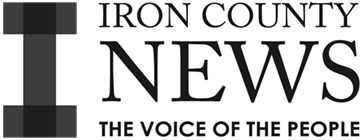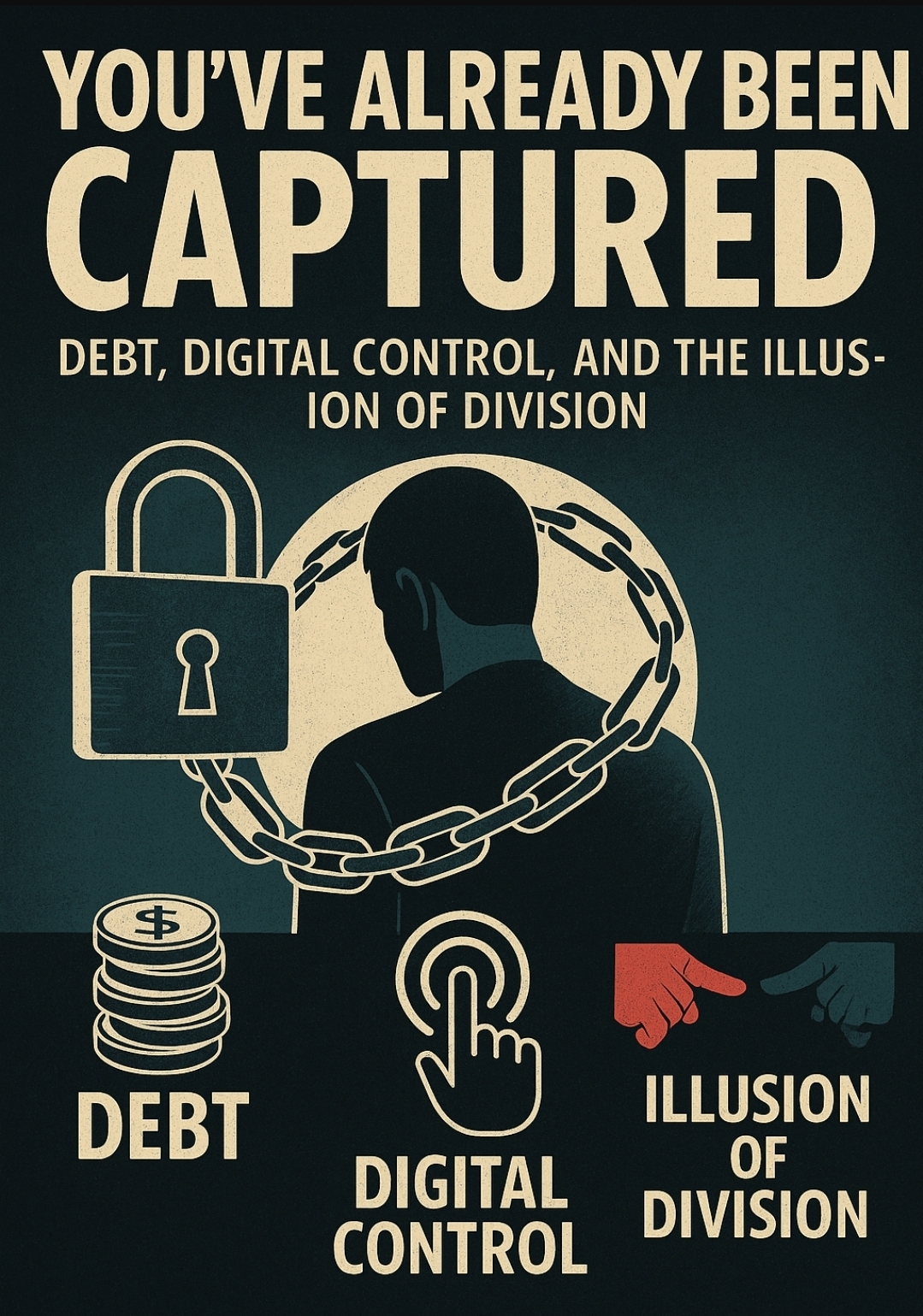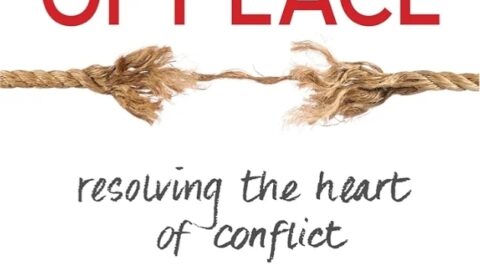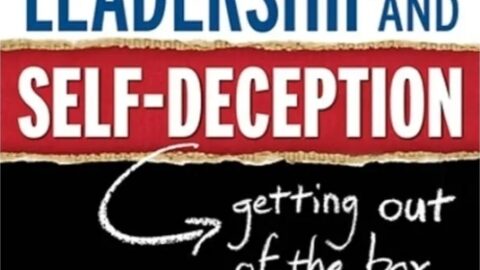Introduction: Why Everything Seems Random
To most people, the world feels bewildering. Wars erupt without clear reasons. One day, Ukraine dominates headlines; the next, Gaza burns; tomorrow, Taiwan may be framed as the “next flashpoint.” Financial crises seem to appear out of nowhere—the housing collapse of 2008, the COVID crash of 2020, the inflation crisis of the early 2020s. Meanwhile, governments lurch into new policies with dizzying speed: mass surveillance normalized after 9/11, vaccine mandates after COVID, or digital ID proposals quietly slipped into “safety” bills.
It feels random, chaotic, even nonsensical. But as David Icke puts it, if you know the outcome, the journey makes sense.
The outcome, he argues, is already scripted: a global digital, AI-controlled dystopia, where thought, emotion, money, and even survival are mediated by centralized systems of control. If that destination is clear, then each seemingly random step—the rise of digital currencies, the hype around artificial intelligence, and the orchestration of endless “emergencies”—becomes visible as part of a larger roadmap.
- Digital Currencies: Central banks push for CBDCs under the guise of “modernizing money” or stopping fraud, but these systems would allow governments to track, approve, or deny every purchase you make. What looks like modernization is actually programmable dependency.
- Artificial Intelligence: Silicon Valley sells AI as innovation and convenience—chatbots, personalized ads, self-driving cars. But the deeper push is toward integration with the human brain, where AI not only responds to your thoughts but shapes them.
- Engineered Crises: Each disruption—terrorism, pandemics, financial collapses, climate emergencies—serves to justify the next layer of surveillance, restriction, or consolidation of power. What feels like chaos is actually orchestration.
Seen through that lens, the randomness vanishes. The bewildering steps fall into sequence: each crisis, each new technology, each political overreach is not a detour but a step toward the same destination.
The Goal: Human-AI Fusion
At the center of this roadmap lies the ambition to fuse the human brain and body with artificial intelligence. On the surface, it is marketed as medical progress or technological convenience: curing paralysis with brain implants, enhancing memory, or linking minds together to “share thoughts.” But underneath, the project is not about helping people think better or solve problems faster. It is about programming consciousness itself.
- Neural Interfaces (Elon Musk’s Neuralink): Musk publicly frames Neuralink as a medical device to help stroke victims or people with spinal injuries. Yet once brain-computer interfaces are normalized, the same pathways that allow someone to move a prosthetic arm could also be used to monitor or alter emotional responses. Imagine governments or corporations with direct access to your thought patterns—not just your browser history.
- Algorithmic Emotion Shaping: Already, social media platforms like Facebook and TikTok can nudge moods by manipulating feeds. Facebook’s infamous 2012 experiment secretly adjusted user timelines to see if people would feel happier or sadder. Scale that up with AI wired into the brain itself, and the ability to “suggest” emotions moves from external nudges to direct programming.
- Cognitive Firewalls: AI doesn’t just predict what you want to see—it increasingly decides what you can’t see. Search algorithms hide inconvenient results. Fact-check labels discredit dissent. Combined with AI-brain fusion, this becomes a built-in filter: unwanted thoughts or questions could be suppressed before they even form into words.
- Military Interest: DARPA has already invested in “brain-computer symbiosis” for soldiers. The stated purpose is faster communication or coordination on the battlefield. But history shows military tech rarely stays confined to combat—it flows into policing, surveillance, and eventually civilian life. A population with AI “partners” inside their heads would be easier to track, easier to pacify, and harder to rebel.
When AI can dictate not only what you see and hear, but what you think and feel, freedom collapses at its root. You no longer own your perception, your inner voice, or even your impulses. Humanity becomes, in Icke’s words, “a computer terminal on someone else’s internet.”
Money: The First System of Control
If AI is the future of control, money has always been its foundation. For centuries, elites have used financial systems not just to allocate resources, but to determine freedom itself. Whoever controls money controls choice.
The key trick was the invention of credit and fractional reserve lending—where banks lend money they do not actually have. A bank types digits into your account, creating “credit” that never existed in reality. Yet you are required to pay it back with interest, which also doesn’t exist in circulation. When you inevitably fall behind, the bank seizes what does exist: your home, your land, your business, your labor.
This sleight of hand—conjuring fake wealth to acquire real wealth—has been the central engine of upward transfer for centuries.
- The Great Depression (1930s): Millions lost farms and homes, not because the land vanished, but because credit collapsed. Banks repossessed assets for pennies on the dollar, consolidating ownership in fewer hands.
- 2008 Financial Crisis: Banks lent out subprime mortgages—money created out of thin air—then bundled and sold the debt as securities. When the bubble burst, ordinary people lost homes while banks were bailed out. Once again, fake wealth evaporated, and real assets—property, savings, pensions—were absorbed upward.
- The Billionaire Gap: Oxfam has tracked how wealth concentration has accelerated. A 2017 report found just 8 men controlled as much wealth as the poorest half of humanity (3.6 billion people). In 2024, the numbers tightened further, with fewer than 100 billionaires holding more wealth than 5 billion people combined. This isn’t “market success”—it’s the mathematical result of a system where interest always exceeds money supply.
- The IMF and World Bank: For developing nations, debt is the leash. Loans are extended in dollars that never truly existed, but repayment requires real labor, resources, and sovereignty. Countries that default surrender control over land, ports, or policies. Fake credit becomes a weapon to annex real sovereignty.
This is why scarcity persists in a world of abundance. The money supply is engineered to guarantee failure. Entire societies live in permanent deficit, struggling to catch up to debt plus interest that was never created.
The outcome is visible today: a handful of billionaires own more wealth than billions of the world’s poorest combined. This is not an accident of “talent” or “luck.” It is the design of a system where fake money is the bait and real freedom is the prize, harvested at scale.
The Impossible Debt Trap
The modern money system isn’t broken. It works exactly as designed—to keep most people permanently in debt.
The flaw is mathematical: when banks create credit, they conjure the principal but not the interest. If you borrow $100,000, the bank types $100,000 into your account. But you must repay $100,000 plus interest—say $120,000 over time. Where does the extra $20,000 come from? It doesn’t exist in circulation. The only way to pay it is if others borrow more, expanding the system.
This means defaults aren’t anomalies—they’re inevitable. Someone, somewhere, must lose for the system to keep running.
Historical Illustrations
- The Great Depression (1930s): When credit tightened, millions defaulted. Families lost homes, farmers lost land, and small businesses collapsed. Who benefited? Banks and financiers, who scooped up foreclosed properties and assets at rock-bottom prices. Ordinary people starved while elites consolidated ownership.
- Third World Debt Crisis (1980s–1990s): Nations across Africa and Latin America borrowed from the IMF and World Bank. The interest payments alone became impossible to sustain. To avoid default, they surrendered sovereignty: cutting social services, opening markets to foreign corporations, and selling national assets. Debt became a weapon to colonize without armies.
- 2008 Mortgage Meltdown: Families signed subprime loans they could never repay. Banks knew defaults were inevitable but packaged the toxic debt into securities, sold them globally, then got bailed out when it collapsed. Millions of Americans lost homes, but banks were rescued and executives collected bonuses. Once again, real wealth flowed upward.
- Student Loans Today: In the U.S., young people start adult life tens of thousands of dollars in debt. The principal is crushing enough—but the interest ensures many never escape. Default is baked in, which keeps an entire generation tied to wage slavery, unable to accumulate assets or resist systemic power.
The Trap in Plain Sight
This is not an unfortunate side effect. It is the feature that makes control possible. Debt absorbs freedom by chaining people to survival:
- Families can’t risk dissent when their mortgage depends on a paycheck.
- Workers can’t walk away when debt collectors stalk them.
- Nations can’t resist global banks when interest payments loom larger than budgets.
The outcome is systemic dependency. The house always wins because it built the rules of the game.
This is why poverty, foreclosures, and bankruptcies aren’t glitches in capitalism—they are the engine that keeps wealth flowing upward. The impossible debt trap ensures that the many must always scramble, while the few quietly absorb the world’s assets and freedoms.
From Credit to Digital Chains
Debt was the first shackle. Digital money is the upgrade. Where credit enslaved through mathematical impossibility, Central Bank Digital Currencies (CBDCs) will enslave through programmable control.
How It Works
Cash is anonymous: once a bill changes hands, the state can’t track or stop the transaction. CBDCs end that. Every unit of digital currency is traceable, programmable, and revocable. With CBDCs:
- Your money can be geo-fenced (usable only within certain locations).
- Purchases can be restricted (“no red meat for you this week, citizen”).
- Savings can be eroded by expiration dates (forcing you to spend or lose it).
- Accounts can be frozen instantly if you protest, share “misinformation,” or fail to comply with state mandates.
Real-World Precedents
The blueprint is not theoretical—it’s already being tested.
- China’s Digital Yuan: Integrated with the social credit system. Citizens who criticize the Party, jaywalk, or associate with “undesirables” can lose access to travel, schooling, or financial services. Imagine a Western version where a critical tweet means your grocery budget shrinks.
- Canada, 2022 Truckers’ Protest: Without CBDCs, the state still froze bank accounts of protestors and even donors—people who merely gave $50 were punished. CBDCs would make this seamless: no need to pressure banks; the switch could be flipped directly.
- Nigeria’s eNaira: Rolled out to reduce cash use. Citizens resisted, preferring cash. The government responded by physically limiting cash withdrawals to force adoption. This shows how coercion pairs with digital rollout: first restrict choice, then present digital as the “only option.”
- COVID-Era Precedents: During lockdowns, digital “vaccine passports” were trial runs. Access to restaurants, flights, even work was tied to scanning a QR code. CBDCs will extend that logic to food, energy, and money itself.
From Debt to Direct Control
With credit, elites had to wait for defaults, foreclosures, and repossessions to seize assets. With CBDCs, they won’t need to wait. Noncompliance itself becomes the trigger.
- Speak against the government? Your funds are frozen.
- Exceed your carbon quota? Your digital wallet blocks fuel purchases.
- Donate to the “wrong” cause? Your account is flagged, and you’re cut off from utilities.
Where debt produced dependency indirectly, CBDCs enable instant, visible punishment and obedience.
The Bigger Picture
CBDCs will not replace credit—they will merge with it. Imagine taking out a loan:
- Miss a payment, and your digital wallet automatically restricts “luxury” spending.
- Take too long to repay, and your access to travel or work platforms is throttled.
- Default entirely, and your ID-linked currency vanishes, locking you out of society.
The entire financial system becomes not just an economy, but a digital prison.
The Prison of Belief
Why don’t people see the chains being fastened around them? Because they are trapped in what David Icke calls “belief-system prisons.” These prisons are not physical—they are psychological. People defend the walls of their own cages, mistaking them for identity, truth, or safety.
Political Labels as Prisons
- Left vs. Right: Citizens spend endless energy arguing whether Democrats or Republicans are destroying the country. Meanwhile, both parties vote for the same trillion-dollar military budgets, the same bailouts for banks, the same blank checks for foreign wars. By fighting over tribal colors, people fail to notice the cage they’re both locked inside.
- 2016–2024 U.S. Elections: Conservatives were conditioned to defend every Trump action as patriotism, even when he signed massive spending bills or pushed Big Pharma vaccines. Liberals, on the other hand, cheered censorship and mandates as “progress.” Both tribes were captured—just in different prisons.
Religious Identity as a Prison
- Christian vs. Muslim: Wars in Iraq and Afghanistan were sold as battles of “civilization versus terror.” Muslims were demonized as the enemy. Yet both Christians and Muslims lost freedom: surveillance expanded, civil liberties shrank, and global elites enriched themselves through war.
- Israel vs. Palestine: Many Christians reflexively defend Israel out of theological loyalty. Many Muslims reflexively side with Palestine out of religious solidarity. Both miss the larger point: ordinary Jews, Muslims, and Christians alike are pawns in a geopolitical game of power, finance, and land.
Cultural Loyalties as a Prison
- East vs. West: The “AI arms race” is framed as America vs. China. Citizens are told to cheer their side’s AI dominance. But in reality, Western and Chinese tech firms often collaborate, share investors, and answer to the same global financial networks. The illusion of competition hides a single agenda: merging humanity with machine.
- COVID Divisions: Mask vs. anti-mask, vax vs. anti-vax, liberal science vs. conservative freedom. The real outcome was the same: both sides accepted emergency powers, digital passports, and new levels of state intrusion. The “debate” itself obscured the shared prison.
How Division Serves the Controllers
When people fight each other—Republican vs. Democrat, Christian vs. Muslim, pro-Israel vs. pro-Palestine—they burn energy on battles scripted for them. The true architects of control don’t care which side “wins.” They care only that the fight keeps people distracted while the infrastructure of control—CBDCs, AI surveillance, and digital ID systems—is quietly built around everyone.
The prison of belief convinces you your tribe is safe if only the “other side” is defeated. In reality, the system targets everyone equally. The same debt ensnares left and right. The same surveillance watches Muslim and Christian. The same AI algorithms profile Jew, Hindu, and atheist alike.
The AI Illusion: A Race That Isn’t Real
The mainstream narrative frames artificial intelligence as a global arms race. Politicians declare: “We must win the AI race against China.” Tech CEOs warn that if America doesn’t lead, authoritarian regimes will dominate. The European Union pushes for “responsible AI” to carve out its own leadership role. At first glance, it looks like genuine rivalry.
But as Icke emphasizes, this “race” is an illusion. The appearance of competition conceals a shared outcome: universal AI adoption and eventual fusion of human consciousness with machine intelligence.
Example 1: Elon Musk and Grok AI
- Musk positions himself as the “reluctant hero” warning about AI dangers while simultaneously building Neuralink (brain-computer interface) and Grok AI (his generative AI).
- He warns about China and OpenAI, yet his projects pursue the same trajectory: embedding AI deeper into human decision-making until resistance seems futile.
Example 2: Sam Altman and OpenAI
- Altman sells OpenAI as a mission to make AI “safe” and “aligned with humanity.” Yet OpenAI is backed by Microsoft—a corporation historically tied to U.S. defense, surveillance contracts, and global finance.
- Altman himself openly advocates universal basic income, a cornerstone of the dependency system tied to digital currencies and AI-driven job displacement.
Example 3: Larry Ellison and Oracle
- Oracle controls critical U.S. government data infrastructure. Ellison, one of Trump’s closest billionaire allies, positions Oracle as “America’s firewall against China.”
- Yet Oracle simultaneously integrates with global data-sharing agreements, serving the same long-term agenda: a planetary surveillance and control grid.
Example 4: China’s “Rival AI”
- The CCP pushes its own AI giants (like Baidu, Tencent, Huawei). But Chinese AI relies heavily on Western-designed chips, patents, and investment pipelines.
- Western elites use China as the “bogeyman” to justify accelerated AI adoption in America and Europe—“If we don’t do it first, China will enslave us.” Ironically, the fear of control becomes the justification for embracing control.
Example 5: Israel’s AI and Cybersecurity Firms
- Israel, though small, is a global leader in AI-driven cyber defense, predictive policing, and surveillance tech. Companies like NSO Group (creator of Pegasus spyware) supply governments worldwide, blurring the lines between East and West.
- Much of this technology is exported to the U.S., Europe, and China alike—showing that the “competition” masks a global supply chain of control.
Historical Parallel: The Space Race
- Just as the 1960s “space race” between the U.S. and USSR justified massive funding, secrecy, and militarization, the “AI race” performs the same function today. It stirs fear and nationalism to ensure public compliance with programs they might otherwise resist.
- In the end, both superpowers benefited from captured Nazi rocket scientists, secret technology transfers, and back-channel cooperation. The rivalry was real enough on the surface—but the outcome (a permanent military-industrial complex) served the same global elite.
The Outcome Hidden in Plain Sight
By portraying AI as a patriotic contest, citizens are nudged into cheering for their side’s domination. But whether you root for Musk, Altman, Ellison, or China, the destination is the same: a world where dependence on AI becomes unquestionable and the merging of humanity with machine appears inevitable.
The “competition” is theater. The winners and losers are pre-scripted. The real prize is your compliance—getting you to believe that enslavement is survival, that fusion with AI is progress, and that refusing it is falling behind.
End Times: Not Fireballs, but Control
When most people hear “end times,” they imagine Hollywood spectacles: meteors slamming into Earth, mushroom clouds over cities, or the planet engulfed in fire. But as Icke argues, this is a misdirection. The “end times” are not about physical destruction but about psychological and spiritual control reaching its apex.
It is the end of an era of deception — centuries of financial manipulation, propaganda, and engineered crises — finally culminating in a system where thought, emotion, money, and even survival are mediated by artificial intelligence and centralized authority.
The question is not if humanity ends, but how this era ends: in total enslavement or in awakening and liberation.
Example 1: COVID-19 and Emergency Powers
- The pandemic revealed how quickly freedoms can vanish when fear dominates perception. Overnight, governments across the world shut down businesses, restricted travel, mandated injections, and silenced dissent — all in the name of safety.
- The end times template was on full display: crisis → fear → obedience → new normal. Most complied, not because they were chained, but because they believed compliance was survival.
Example 2: The Patriot Act and 9/11
- After the September 11 attacks, Americans accepted sweeping surveillance laws they would have once rejected as unconstitutional.
- Why? Because fear redefined perception. Citizens believed surrendering liberty meant gaining safety. Two decades later, those powers remain in place — showing how “temporary measures” become permanent control.
Example 3: Digital Money as Chains
- CBDCs (Central Bank Digital Currencies) are sold as innovation, efficiency, or protection against fraud. But in practice, they allow authorities to decide what you can buy, where you can spend, and whether your account remains active.
- Once society accepts this system, freedom ends not with a bang but with a silent click. No one needs to burn down cities — they simply freeze your wallet.
Example 4: The Illusion of Political Choice
- In America, citizens are told to choose between Democrats and Republicans. In reality, both sides vote for war budgets, foreign aid to Israel, debt-driven spending, and surveillance laws.
- This isn’t collapse by meteor. It’s collapse by illusion: people believe they have choice, so they never resist the deeper capture.
Example 5: Psychological Control through Media
- Constant repetition of slogans (“trust the experts,” “safe and effective,” “for democracy”) conditions people to comply.
- When perception is shaped this way, chains are no longer necessary. People self-police, self-censor, and self-limit their own freedoms — convinced they are “responsible citizens.”
The Core Insight
Power structures do not survive because they are invincible. They survive because people believe in them — and belief generates compliance. If enough people simply withdraw agreement, the edifice crumbles.
- Refuse to accept debt as inevitable, and the banking pyramid wobbles.
- Refuse to let fear dictate choices, and emergency powers lose their bite.
- Refuse to buy the illusion of left vs. right, and political theater collapses.
The “end times,” then, are not about a meteor or divine explosion. They are about the end of an illusion — the moment when manipulation becomes so obvious that humanity must choose: stay enslaved by lies, or withdraw belief and reclaim freedom.
Crisis, Reaction, Solution: The Old Playbook
Every major expansion of power follows the same three-act structure:
- Create or exploit a crisis.
- Provoke a reaction of fear and desperation.
- Offer the pre-planned solution that expands control.
The crisis itself is often less important than the response it generates. What matters is conditioning the public to trade liberty for security, truth for propaganda, and sovereignty for centralized control.
Example 1: 9/11 and the War on Terror
- Crisis: Coordinated terror attacks on U.S. soil shocked the world.
- Reaction: Americans were terrified, desperate for safety, willing to accept anything to prevent another attack.
- Solution: The Patriot Act shredded constitutional rights, enabling mass surveillance, indefinite detention, and warrantless spying. Wars in Iraq and Afghanistan followed — framed as defense, but serving geopolitical and financial interests.
Example 2: The 2008 Financial Crash
- Crisis: Banks gambled with toxic mortgages, creating a global economic collapse.
- Reaction: Panic spread as people feared losing homes, savings, and jobs.
- Solution: Instead of punishing fraud, governments bailed out the very institutions that caused the disaster. Ordinary citizens absorbed the pain through foreclosures and austerity, while elites consolidated wealth.
Example 3: COVID-19 Pandemic
- Crisis: A novel virus spread globally, amplified by constant fear-driven coverage.
- Reaction: Populations accepted unprecedented restrictions—lockdowns, travel bans, forced masking, and silencing of dissent.
- Solution: Governments expanded emergency powers, tech firms rolled out censorship regimes, and pharmaceutical giants secured guaranteed profits through rushed vaccine programs like Operation Warp Speed. The “temporary” measures morphed into lasting precedents for future crises.
Example 4: Climate Emergency Narrative
- Crisis: Real environmental issues are framed as apocalyptic, imminent global doom.
- Reaction: Citizens accept fear-based rhetoric that human survival is at stake.
- Solution: Calls for centralized “green” governance, carbon tracking, restrictions on farming, and surveillance of energy use. Instead of empowering communities with local resilience, solutions funnel power upward to global regulatory bodies.
Example 5: Ongoing Wars and Proxy Conflicts
- Crisis: Conflicts in Iraq, Ukraine, Gaza, and Yemen are presented as spontaneous eruptions of violence.
- Reaction: Citizens are bombarded with simplified narratives (“for democracy,” “defending allies,” “stopping terrorism”), fueling moral panic and tribal division.
- Solution: Billions flow into defense contractors and foreign aid while dissenters at home are branded as unpatriotic. Each war expands surveillance, censorship, and financial dependency.
The Core Insight
The formula is always the same:
- Crisis frightens the public.
- Reaction conditions people to beg for rescue.
- Solution centralizes control that elites already had waiting in the wings.
The trick only works when people fail to see the pattern. Once the template is recognized, fear loses its grip — and freedom begins to reassert itself.
Preparation as Psychological Sovereignty
When people ask, “How do I prepare?” the usual answers are canned food, water filters, and batteries. These are useful, but they address only the surface. The deeper preparation is not physical — it is psychological sovereignty.
The elites’ primary weapon is not bombs or viruses. It is fear. Fear is the currency of control. Terrified populations will hand over freedoms voluntarily, so long as they believe it buys safety. History shows this exchange over and over.
Example 1: COVID Lockdowns
When the pandemic struck, governments deployed the classic formula: crisis, reaction, solution. Fear of death drove people to accept restrictions on movement, business closures, censorship of dissent, and rushed medical interventions. Even when data didn’t justify continued lockdowns, fear kept the masses compliant. Those who maintained psychological sovereignty—who questioned narratives, cross-checked data, and resisted groupthink—were better prepared, not just with supplies but with clarity.
Example 2: War Coverage and Propaganda
In the transcript, David Icke points out how Israel’s bombing of Gaza hospitals was broadcast live. Even when Netanyahu admitted fault, many American pundits still blamed Hamas. Why? Because they were conditioned to fear being on the “wrong side” of the narrative. Fear of being labeled antisemitic or “anti-American” overrode their own eyes. Preparation here means sovereignty: the ability to say, “I will trust what I see, not what I’m told to see.”
Example 3: The Financial Debt Trap
Fear also drives economic submission. People chained to impossible debts work jobs they hate, accept policies they despise, and comply with mandates they disagree with — all to keep their homes or feed their families. True preparation means not just saving money, but seeing through the trap of debt-based control. Awareness itself breaks the spell, making alternative systems (local trade, bartering, self-sufficiency) viable.
Example 4: The AI “Race” Narrative
Icke also highlights the manufactured competition: Musk’s Grok vs. OpenAI vs. Chinese AI. The framing is “we must win the race or lose to China.” Fear of being left behind justifies blind acceptance of AI adoption. But the sovereignty-prepared recognize the trick: the “competition” is staged. Preparation means resisting the reflex to cheer for one side and instead asking: Who benefits if we all accept AI as inevitable?
Example 5: End Times Conditioning
The transcript reframes the “end times.” It is not fireballs or meteors, but the climax of psychological control. Governments normalize emergency powers. Media trains us to equate dissent with extremism. Fear of being “dangerous” or “radical” keeps people docile. Preparation here is inner rebellion: refusing to let labels define you, refusing to cede your perception of truth to systems of control.
The Core Lesson
If your mind is still captured, your supplies won’t save you. You’ll hand them over at the first sign of fear-driven authority. Psychological sovereignty means:
- Refusing to let fear dictate choices.
- Seeing patterns behind crises instead of reacting blindly.
- Training discernment to separate truth from narrative.
- Reclaiming the right to decide what’s real — without permission from media, government, or corporate “fact-checkers.”
This is the first pillar of preparation. Only when your mind is free can your food, water, and supplies truly matter.
Building Resilience: From Isolation to Community
Control systems thrive on isolation. An isolated individual is easier to scare, easier to silence, and easier to push into compliance. That is why one of the oldest tricks in authoritarian playbooks is to cut people off—from each other, from trusted information, and from independent support networks.
True resilience isn’t just about how much you can store in your basement. Supplies can be stolen, accounts frozen, or access restricted. But solidarity—shared trust, knowledge, and community—is far harder to strip away.
Example 1: Lockdowns and Social Separation
During COVID, isolation was weaponized. Families were separated, funerals banned, gatherings outlawed. Fear of contamination justified tearing apart human connection. While millions sat alone in front of screens, fearful and dependent on state guidance, elites expanded power. By contrast, communities that quietly supported each other—sharing food, childcare, or even simply face-to-face encouragement—suffered less psychological damage and maintained dignity.
Example 2: Palestine and the Bravery of Journalists
In the transcript, Icke highlights journalists in Gaza. Despite watching colleagues die, they continue reporting—because they are not alone. Their resilience doesn’t come from body armor or rations; it comes from solidarity, from the knowledge that they are part of a cause greater than themselves. Isolation would have silenced them; community gives them courage.
Example 3: The Financial Trap vs. Mutual Aid
Debt makes people slaves to banks, but local networks can counterbalance it. Historically, cooperative credit unions, church funds, or even neighborhood barter systems reduced dependence on predatory institutions. When neighbors shared tools, grew food together, or pooled savings, elites lost leverage. Today, prepping communities mirror that tradition: swapping seeds, skills, and strategies so survival isn’t an individual burden but a collective shield.
Example 4: Technology and False Connection
Social media promises connection but delivers isolation. Followers are not friends; likes are not loyalty. The transcript warns that AI-driven systems are drawing us deeper into this trap. Building resilience means replacing digital simulation with flesh-and-blood solidarity—knowing who will knock on your door when systems fail, and whose door you can knock on.
Example 5: Historical Echoes of Collapse
In the Great Depression, survival wasn’t about who had the most cash (banks failed) or the most gold (which couldn’t buy bread in some towns). It was about who had community ties. Farmers who shared harvests, neighbors who fixed each other’s tools, churches that ran soup kitchens—these networks preserved life when official systems failed. The lesson is timeless: trust and mutual reliance outlast both paper money and digital tokens.
The Core Lesson
Isolation is control’s strongest weapon; community is freedom’s strongest defense.
- Isolation breeds fear. Fearful people comply.
- Community breeds courage. Connected people resist.
In the end times, wealth won’t be measured in coins or CBDC balances. It will be measured in trust, in networks of awareness, in people who stand together when systems collapse.
Conclusion: Walking Into the Storm Awake
We are living through the acceleration of a long-prepared system of control—one built on centuries of financial enslavement, now upgraded through AI integration, digital currencies, surveillance, and engineered crises. To name this system is not paranoia; it is clarity. Awareness is the first weapon of resistance.
Example 1: Debt as Chains, Awareness as Scissors
For generations, people accepted debt slavery as “normal.” Mortgages, student loans, credit cards—each framed as opportunity. In reality, they were shackles. As the transcript showed, the system is designed so there is never enough money in circulation to pay back both principal and interest. Failure is inevitable, which means repossession is guaranteed. Once you see this, “bad luck” stories become visible as design. And seeing is the first step toward cutting the chains.
Example 2: AI as Savior or Jailor
Elon Musk’s Grok AI or Sam Altman’s OpenAI are marketed as liberators—tools to make life easier, knowledge accessible, creativity limitless. But under the surface, these systems track, predict, and program. As Icke warned, they are gateways to the “fusion” where human thought itself becomes a terminal on someone else’s internet. Yet once we see the trick, we can choose differently—rejecting dependency on digital oracles, and cultivating human discernment instead.
Example 3: CBDCs and Programmable Obedience
Digital currencies are sold as modern convenience. In reality, they are programmable chains. Imagine a farmer denied access to seed because his “carbon credits” are too high, or a dissenter locked out of travel because his “social score” dipped. These scenarios are not speculative—they are already piloted in places like China, Nigeria, and Europe. The only reason they spread is because people consent by choosing convenience over freedom. Refuse consent, and the system weakens.
Example 4: Engineered Crises as Gateways
Wars, pandemics, climate emergencies—these are the “storms” elites unleash. Their power lies not in the events themselves but in our reaction. Fear makes us pliable. Desperation makes us obedient. Preparation, in contrast, breeds steadiness. If you have food, you won’t beg. If you have community, you won’t break. If you have clarity, you won’t be manipulated into trading liberty for the illusion of safety.
Example 5: Psychological Sovereignty as Armor
Fear is their greatest weapon. Awareness is our shield. When enough people withdraw belief in the system—stop trusting the narratives, stop salivating to Pavlov’s bell, stop mistaking theater for reality—the whole edifice cracks. As the transcript emphasized, power structures are parasitic: they survive only because we feed them our energy, our compliance, our unthinking obedience.
The Final Word
Preparation is not about hiding underground, waiting for fireballs. It is about walking into the storm awake—eyes open, mind free, spirit unshaken.
- The outcome may be scripted.
- The steps may be mapped.
- But the ending is still ours to choose.
If enough of us reclaim sovereignty—psychological, financial, communal—we can turn their “end times” into our beginning: not dystopian fusion, but human liberation.






